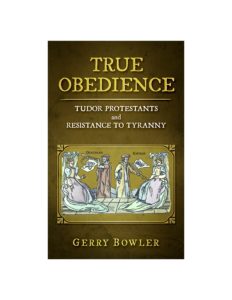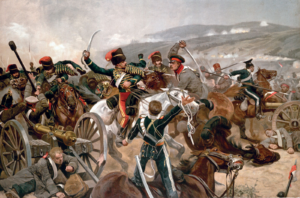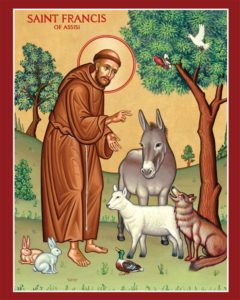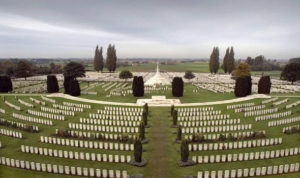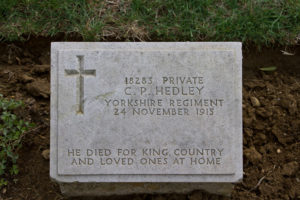“At the core of all successful societies are procedures for blocking the advancement of bad men”
— Paul Collier
Praise the Lord, and pass the resistance theory!
Rejoice, friends and neighbours! At last, the Christmas present for the hard-to-buy-for loved one — a piercing probe into sixteenth-century political thought by one of the historical profession’s most piercing probers. You’ll laugh. You’ll cry. You’ll kiss 12 bucks goodbye. At an Amazon site near you.
October 25, 1854
Because of a misunderstood order, the British Light Brigade of cavalry attacked a heavily defended Russian position during the Crimean War. Casualties were heavy: 118 men killed, 127 wounded, 60 taken prisoner and 335 dead horses. Watching the action, a French general remarked, “C’est magnifique, mais ce n’est pas la guerre. C’est de la folie.” (It’s magnificent, but it’s not war. It is madness.”) Alfred Tennyson’s poem was memorized by schoolboys for over a century.
Half a league, half a league,
Half a league onward,
All in the valley of Death
Rode the six hundred.
“Forward, the Light Brigade!
Charge for the guns!” he said:
Into the valley of Death
Rode the six hundred.
“Forward, the Light Brigade!”
Was there a man dismay’d?
Not tho’ the soldier knew
Some one had blunder’d:
Theirs not to make reply,
Theirs not to reason why,
Theirs but to do and die:
Into the valley of Death
Rode the six hundred.
Cannon to right of them,
Cannon to left of them,
Cannon in front of them
Volley’d and thunder’d;
Storm’d at with shot and shell,
Boldly they rode and well,
Into the jaws of Death,
Into the mouth of Hell
Rode the six hundred.
Flash’d all their sabres bare,
Flash’d as they turn’d in air
Sabring the gunners there,
Charging an army, while
All the world wonder’d:
Plunged in the battery-smoke
Right thro’ the line they broke;
Cossack and Russian
Reel’d from the sabre-stroke
Shatter’d and sunder’d.
Then they rode back, but not
Not the six hundred.
Cannon to right of them,
Cannon to left of them,
Cannon behind them
Volley’d and thunder’d;
Storm’d at with shot and shell,
While horse and hero fell,
They that had fought so well
Came thro’ the jaws of Death,
Back from the mouth of Hell,
All that was left of them,
Left of six hundred.
When can their glory fade?
O the wild charge they made!
All the world wonder’d.
Honor the charge they made!
Honor the Light Brigade,
Noble six hundred!
October 19
Ten reasons why October 19 was a very bad day, (or a good day, depending on whose side you are on.) Certainly it was a very consequential day.
- 202 BC Scipio Africanus and his Roman legions defeat Hannibal at the Battle of Zama. Game over for the Carthaginian Empire.
- 439 Vandal barbarians take Carthage. Persecution of Catholics ensues.
- 1812 Napoleon begins his disastrous retreat from Moscow. His Grande Armée will be destroyed on their way back.
- 1914 First Battle of Ypres. 10 million German and Allied soldiers square off. (see illustration above)
- 1921 Portuguese Prime Minister Antonio Granjo murdered in a coup.
- 1933 Nazi Germany withdraws from the League of Nations.
- 1943 The merchant ship Sinfra is sunk off the coast of Crete. 2,098 Italian prisoners of war drown or are shot by their German guards.
- 1950 The Chinese Communist conquest of Tibet begins.
- 1950 500,000 Chinese Communist “volunteers” pour across the Yalu River to join in the Korean War and save North Korea from a U.N. army.
- 1984 Catholic priest Jerzy Popiełuszko, who had been working with the Solidarity trade union movement, is murdered by the Polish secret police.
Nationalism and chronic back pain
Canadians often point out that while the American constitution promises “Life, liberty, and the pursuit of happiness,” the constitution of Canada–written in the 1860s in England–sets a more modest goal: “Peace, order, and good government.” This difference reaches into every corner of the two nations.
My favourite example is a book of medical advice. It was written by a Canadian, Judylaine Fine, and published in Toronto under an extremely modest title, Your Guide to Coping with Back Pain. Later, American rights were acquired by New York publishers; they brought out precisely the same book under a new title, Conquering Back Pain. And there, in a grain of sand, to borrow from William Blake, we can see a world of differing attitudes. Our language reveals how we think, and what we are capable of thinking. Canadians cope. Americans conquer. Canadian readers of that book will assume that back pain will always be with them. Americans will assume that it can be destroyed, annihilated, abolished, conquered. Americans expect life, liberty, happiness, and total freedom from back pain. Canadians can only imagine peace, order, good government, and moderate back pain.
– Robert Fulford
October 15
The Catholic Church has a history of suspicion of mystics, for how can one tell whether visions are authentic or delusions or engendered by evil forces? Is it the Holy Spirit or is it heartburn? St Teresa and her spiritual director, St John of the Cross, were two sixteenth-century Spanish mystics who were at first repressed by the Church and then hailed as holy figures and canonized.
Teresa Sánchez de Cepeda y Ahumada (1515-82) was born into a wealthy family with some Jewish ancestors and a record of investigations by the Spanish Inquisition which never took conversions at face value. She entered a Carmelite nunnery and for years did nothing to distinguish herself as a spiritual powerhouse but in time two things put her on the path to greatness. The first was a series of visions and mystical contact with the divine and the second was a growing disgust with the moral laxity she found in the convent, a feeling which led her to call for reform. Both brought her trouble from Church authorities.
Some of her colleagues suggested that her visions were demonic and she was advised to keep silent about them but Teresa became convinced that her spiritual encounters were for the good and could not be suppressed. One of her most famous visions was immortalized in stone by the sculptor Bernini (see above).
I saw an angel very near me, towards my left side, in bodily form . . . This angel appeared rather small than large, and very beautiful. His face was so shining that he seemed to be one of those highest angels called seraphs, who look as if all on fire with divine love. He had in his hands a long golden dart; at the end of the point methought there was a little fire. And I felt him thrust it several times through my heart in such a way that it passed through my very bowels. And when he drew it out, methought it pulled them out with it and left me wholly on fire with a great love of God.
She recorded her mystical experiences in book form and eventually the Church recognized their authenticity but her attempts to restore humility and simplicity to the lives of nuns was met with open hostility by her superiors and the Inquisition. She struggled on and saw her Order of the Discalced Carmelites accepted and thriving.
Teresa had a wonderful way with words. She once complained to God that if this was how he treated his friends it was no wonder he had so few of them. She also said that there were more tears shed over prayers answered than prayers denied. When she was criticized for enjoying a good meal she commented, “There is a time for partridge and a time for penance.”
Teresa is the patron saint of Spain, of those suffering from illness, especially headaches, nuns and laceworkers.
Francis of Assisi
October 4 is the feat of St Francis of Assisi, the namesake of the current pope. Chamber’s Book of Days has this to say about him:
The memory of no saint is held in affection so mingled with reverence by the Roman Catholic Church as St. Francis, ‘the gentle and the holy.’ He was born in 1182, in the romantic town of Assisi, in Umbria. His father was a merchant, and a hard money-making man. Francis he took into partnership, but he wasted his money in gay living, splendid dress, and banqueting, and made the streets of Assisi ring at night with song and frolic. When about twenty-five, he was seized with a violent illness, and when he rose from his bed, nature looked dreary, and his soul was filled with loathing for his past life and habits. He resolved to he religious, and of course religious after the fashion of his generation. He determined never to refuse alms to a poor person. He met a troop of beggars, and exchanged his dress for the rags of the filthiest. He mortified himself with such severity, that Assisi thought he had gone distracted. His father had been distressed by his luxury, but now he thought he should be ruined by his alms-giving. To bring him, as he thought, to his senses, he beat him unmercifully, put him in fetters, and locked him up. Finding him, however, incorrigible, he carried him before the bishop; and there and then he renounced all his rights of ownership and inheritance, and stripped off’ his clothes in token of his rejection of the world, and his perpetual choice of poverty.
Francis, thus relieved from all entanglement, pursued his way with. a simple energy which nothing could withstand. The fervour of his devotion diffused itself like an epidemic, and crowds parted with their possessions, and followed him into poverty and beggary. He went to Rome, and offered himself and his comrades to the service of the pope Innocent III, in 1210, incorporated the order, which grew into the mighty and wide-spread fraternity of Franciscans, Grey Friars, or Minor Friars. The first name they had from their founder, the second from their gray clothing, and the third from their humility. Their habit was a loose garment, of a gray color reaching to the ankles, with a cowl of the same, and a cloak over it when they went abroad. They girded themselves with cords, and went barefooted.
The austerities related of Francis are very much of a piece with those told of other saints. He scarcely allowed his body what was necessary to sustain life. If any part of his rough habit seemed too soft, he darned it with packthread, and was wont to say to his brethren, that the devils easily tempted those who wore soft garments. His bed was usually the ground, or he slept sitting, and for his bolster he had a piece of wood or stone. Unless when sick, he rarely ate any food that was cooked with fire, and when he did, he sprinkled it with ashes. Yet it is said, that with indiscreet or excessive austerity he was always displeased. When a brother, by long fasting, was unable to sleep, Francis brought him some bread, and persuaded him to eat by eating with him. In treating with women, he kept so strict a watch over his eyes, that he hardly knew any woman by sight. He used to say:
‘To converse with women, and not be hurt by it, is as difficult as to take fire into one’s bosom and not be burned. He that thinks himself secure, is undone; the devil finding somewhat to take hold on, though it be but a hair, raises a dreadful war.’
He was endowed, say his biographers, with an extraordinary gift of tears; his eyes were as fountains which flowed continuously, and by much weeping he almost lost his sight. In his ecstatic raptures, he often poured forth his soul in verse, and Francis in among the oldest vernacular poets of Italy. His sympathy with nature was very keen. He spoke of birds and beasts with all the tenderness due to children, and Dean Milman says the only malediction he can find which proceeded from his lips, was against a fierce swine which had killed a lamb. He had an especial fondness for lambs and larks, as emblems of the Redeemer and the Cherubim. When his surgeon was about to cauterize him for an issue, he said: ‘Fire, my brother, be thou discreet and gentle to me.’ In one of his hymns, he speaks of his brother the Sun, his sister the Moon, his brother the Wind, his sister the Water. When dying, he said:
‘Welcome, Sister Death.’ While in prayer it is said that he often floated in the air. Leo, his secretary and confessor, testified that he had seen him, when absorbed in devotion, raised above the ground so high that he could only touch his feet, which he held, and watered with his tears; and that some-times he saw him raised much higher!
In his ardor for the conversion of souls, he set out to preach to the Mohammedans. A Christian army was encamped before Damietta, in Egypt. He passed beyond its lines and was seized and carried before the sultan, and at once broke forth in exposition of the mysteries of faith. The sultan is reported to have listened with attention, probably with the Mohammedan reverence for the insane. Francis offered to enter a great fire with the priests of Islam, and to test the truth of their creeds by the result. The offer was declined. ‘I will then enter alone,’ said Francis. If I should be burned, you will impute it to my sins; should I come forth alive, you will embrace the gospel.’ This also the sultan refused, but with every mark of honour convoyed the bold apostle to the camp at Damietta.
The crowning glory of the life of Francis is reputed to have occurred in the solitude of Mount Alverno, whither he had retired to hold a solemn fast in honour of the archangel Michael. One morning, when he was praying, he saw in vision a seraph with six wings, and in the midst of the wings the crucified Saviour. As the vision disappeared, and left on his mind an unutterable sense of delight and awe, he found on his hands and feet black excrescences like nails, and in his side a wound, from which blood frequently oozed, and stained his garment. These marks, in his humility, he hid with jealous care, but they became known, and by their means were wrought many miracles. Pope Alexander IV publicly declared that, with his own eyes, he had seen the stigmata.
Epitaphs
EIGHT OF MY SONS
ANSWERED DUTY’S CALL
GOOD-BY, TOM
THE FIRST TO FALL. MOTHER
SERJEANT THOMAS WHELAN
Mrs Alice Whelan had thirteen children of whom nine survived to adulthood. Widowed before 1911 she and her one daughter described their occupations as ironers.
Thomas was her eldest child. She says of him in the War Graves Commission records that he had had 15 years military service. It is likely that this service had come to the end before the war and that he rejoined on the outbreak. He died of wounds in the hospital centre of St Sever on 1 July 1916, the first day of the Battle of the Somme.
Thomas was ‘the first to fall’. Two years later James Whelan, sixteen years younger than his older brother, died of wounds close to the front line on 26 June 1918.
Eight of my sons
Answered the call
You, dear Jim, were the second
To fall – sleep on
War Graves
The slaughter of World War I produced millions of corpses which had to be identified and buried. Out of this necessity arose the Commonwealth War Graves Commission whose tireless work for decades has led to the creation of mass battlefield cemeteries around the world and individual markers for as many dead as possible.
In 1917 Rudyard Kipling, whose son John had died 2 years earlier, was appointed to the Imperial War Graves Commission as its literary advisor. Every word the Commission used was written, chosen or approved by him, including the dignified inscription on the headstone of the unidentified dead, ‘A soldier of the Great War. Known unto God’. This could be adapted to incorporate any scrap of information that could be discovered about the dead man: a Canadian soldier, a German soldier, a Corporal of the Black Watch, or, as in the case of John Kipling, an 18-year-old Lieutenant in the Irish Guards.
Those who could be identified are honoured by a stone marker with name, age, and military unit, and an inscription chosen by the families they left behind. Some are sternly patriotic, some are trite, some are religious; all are moving.
